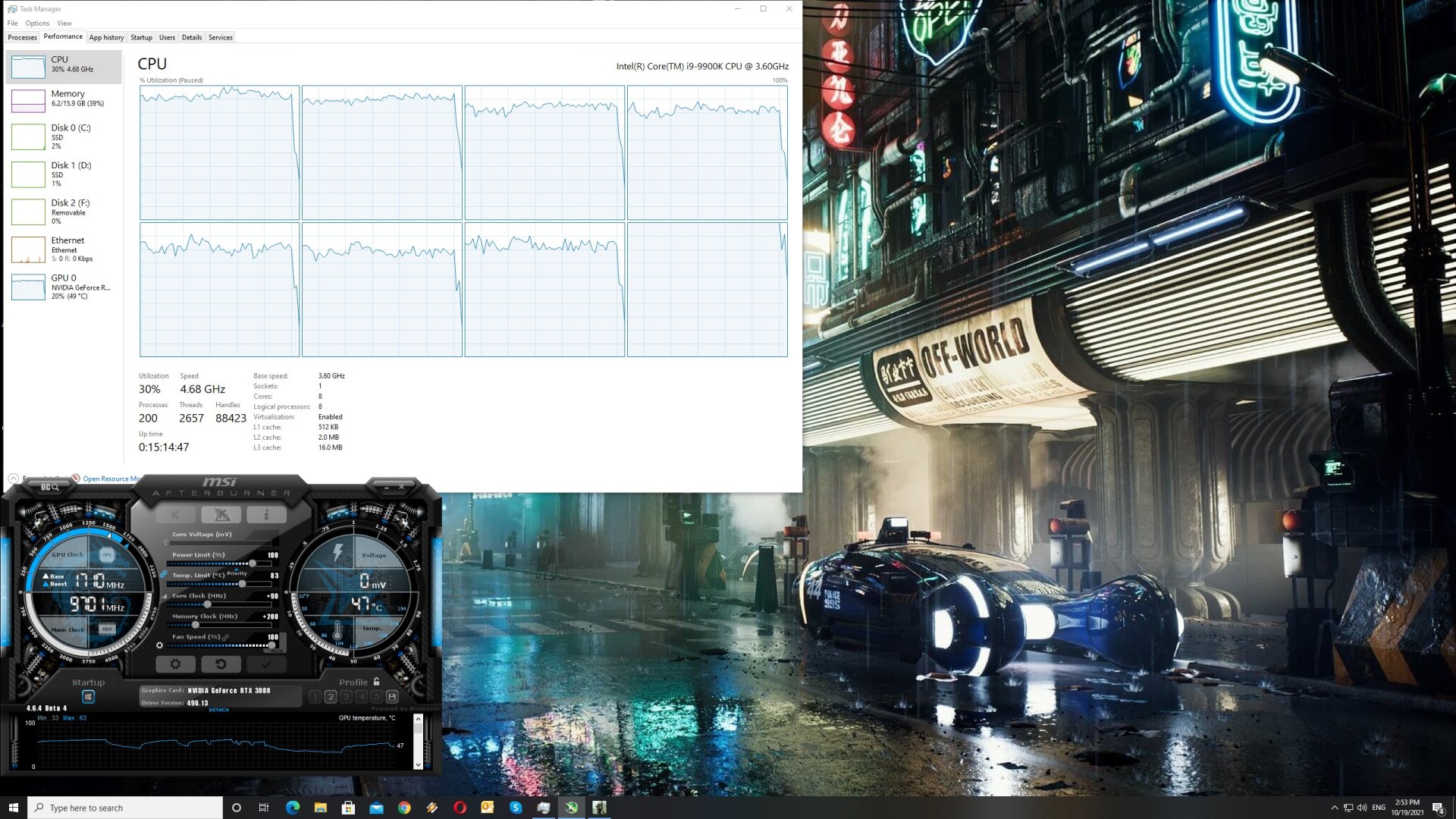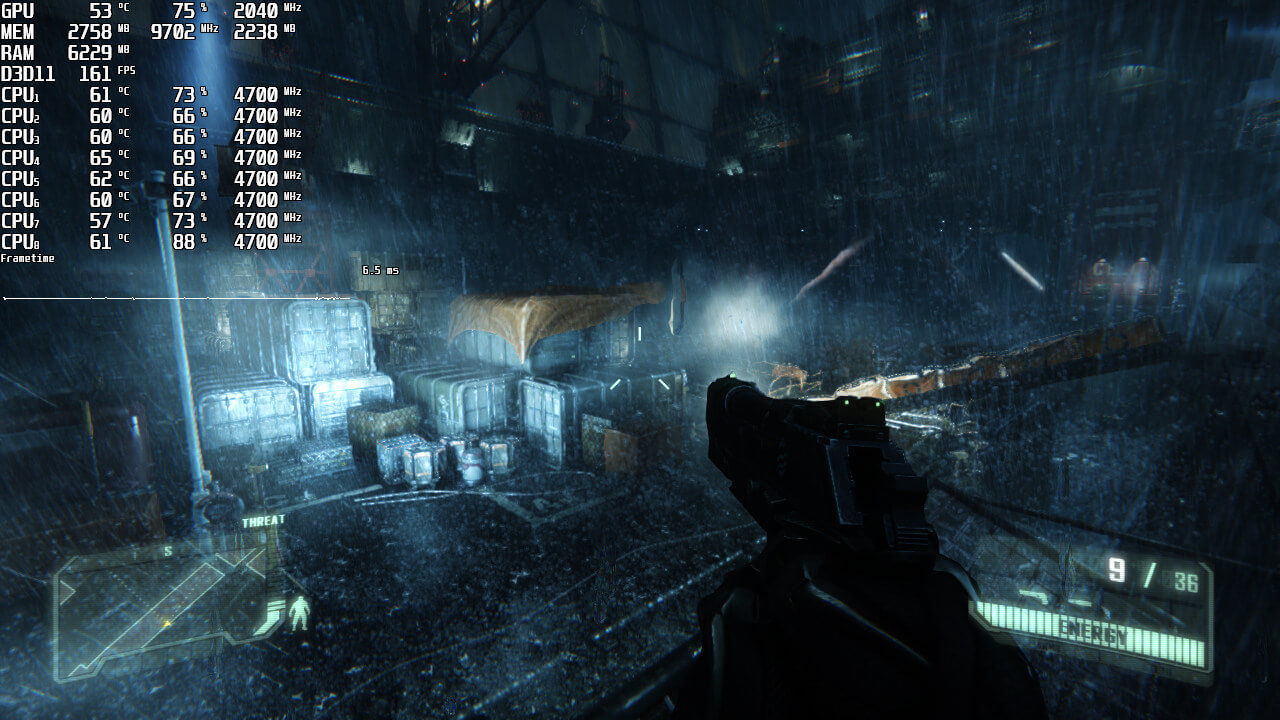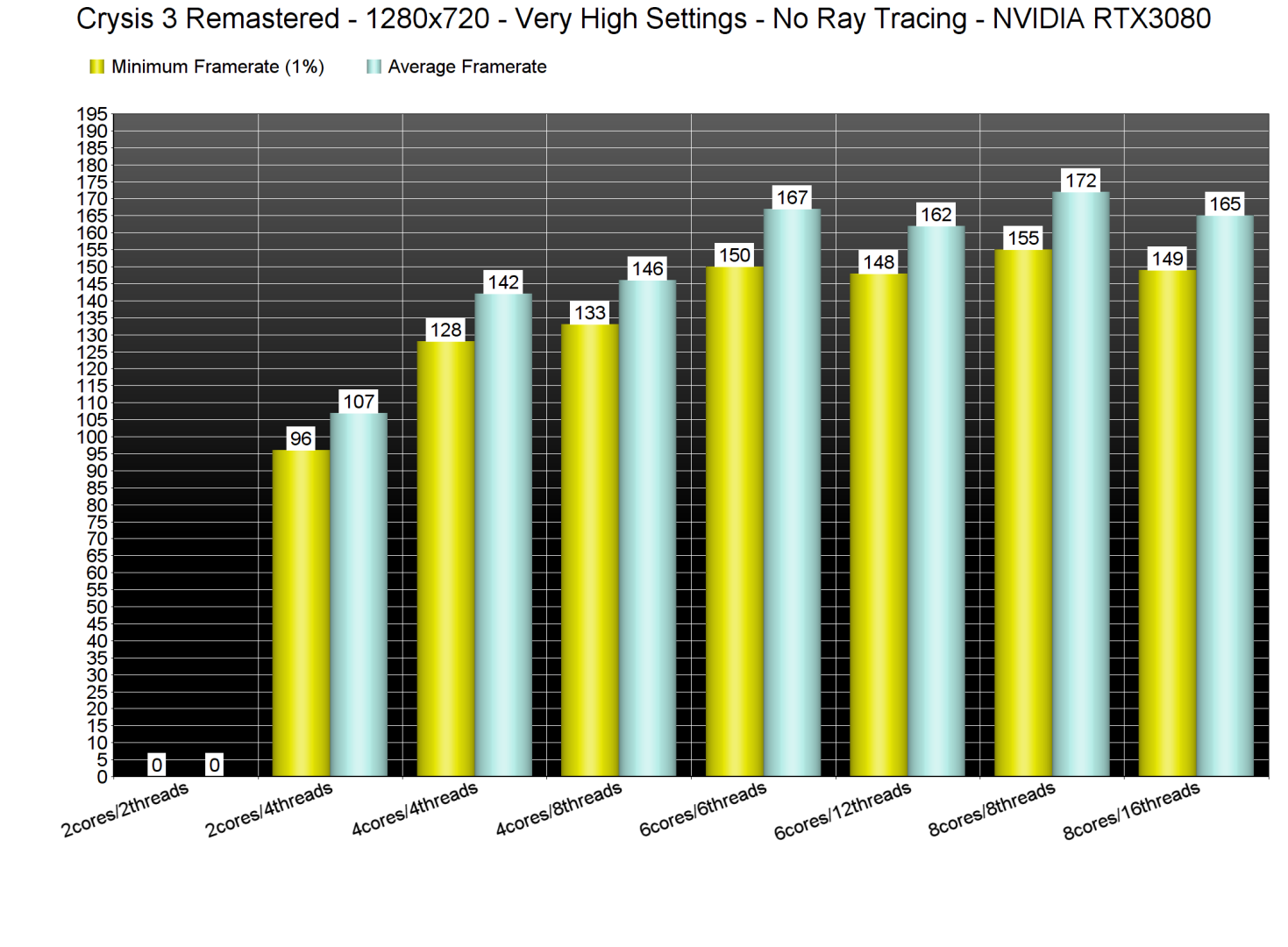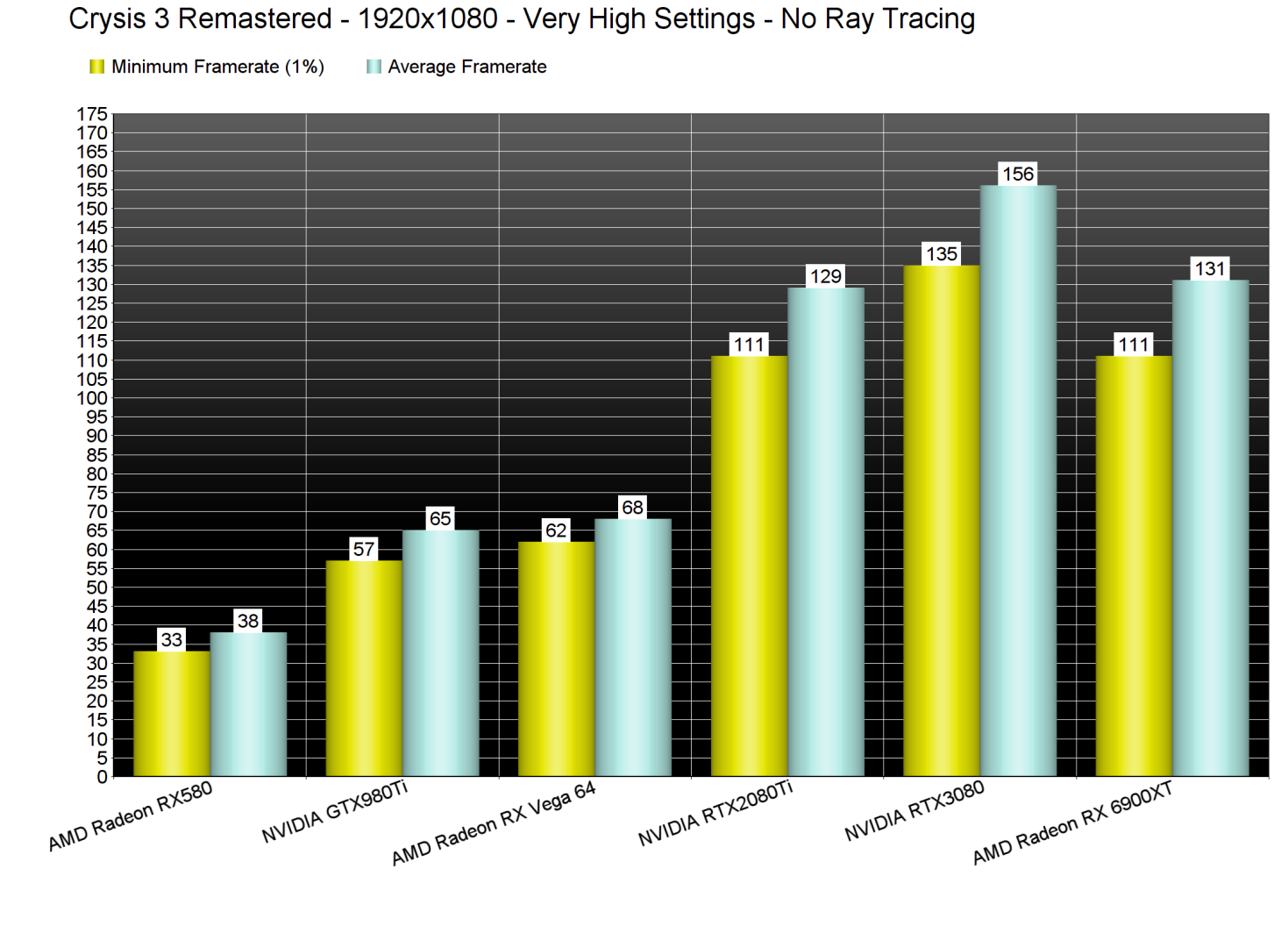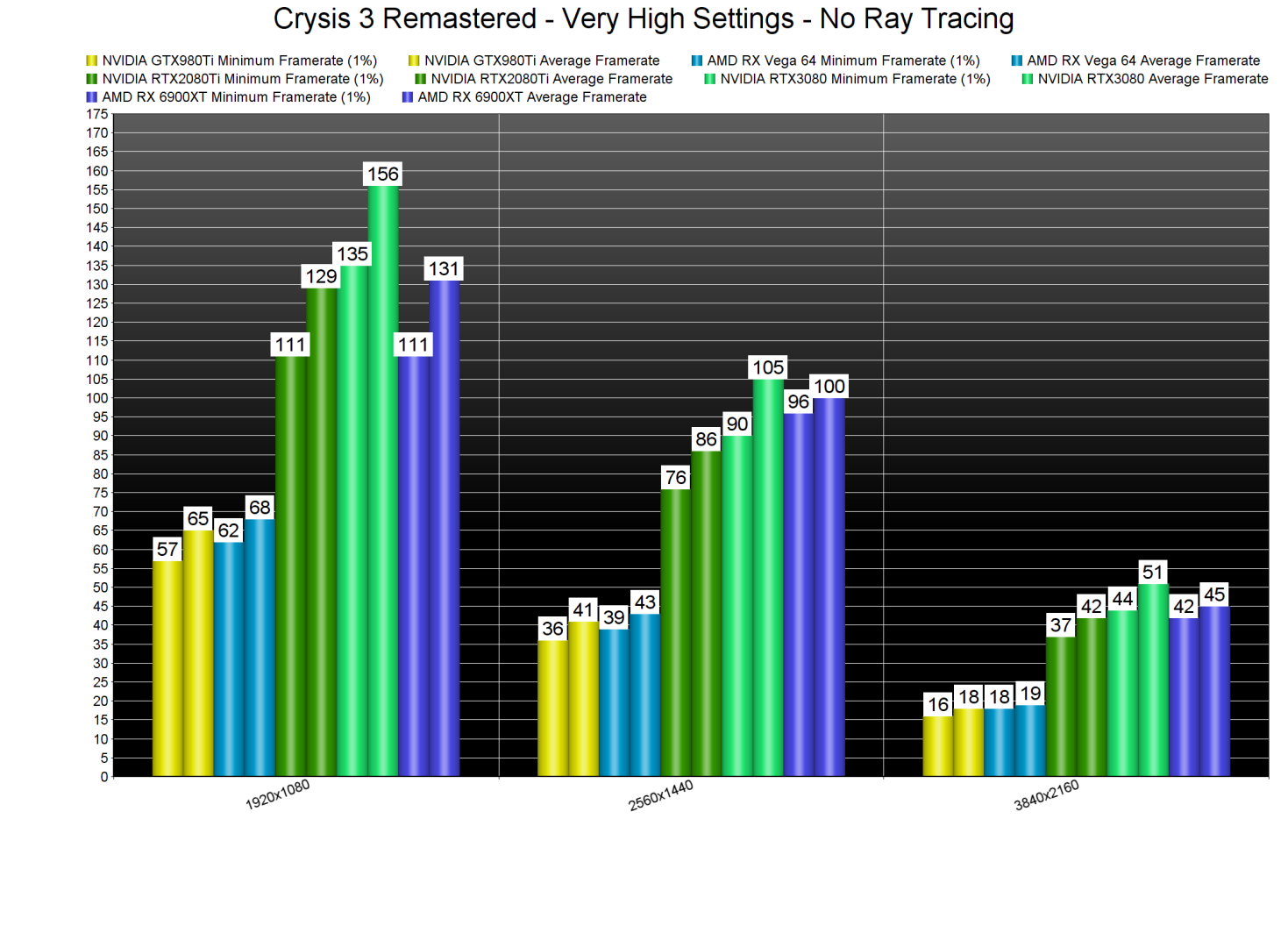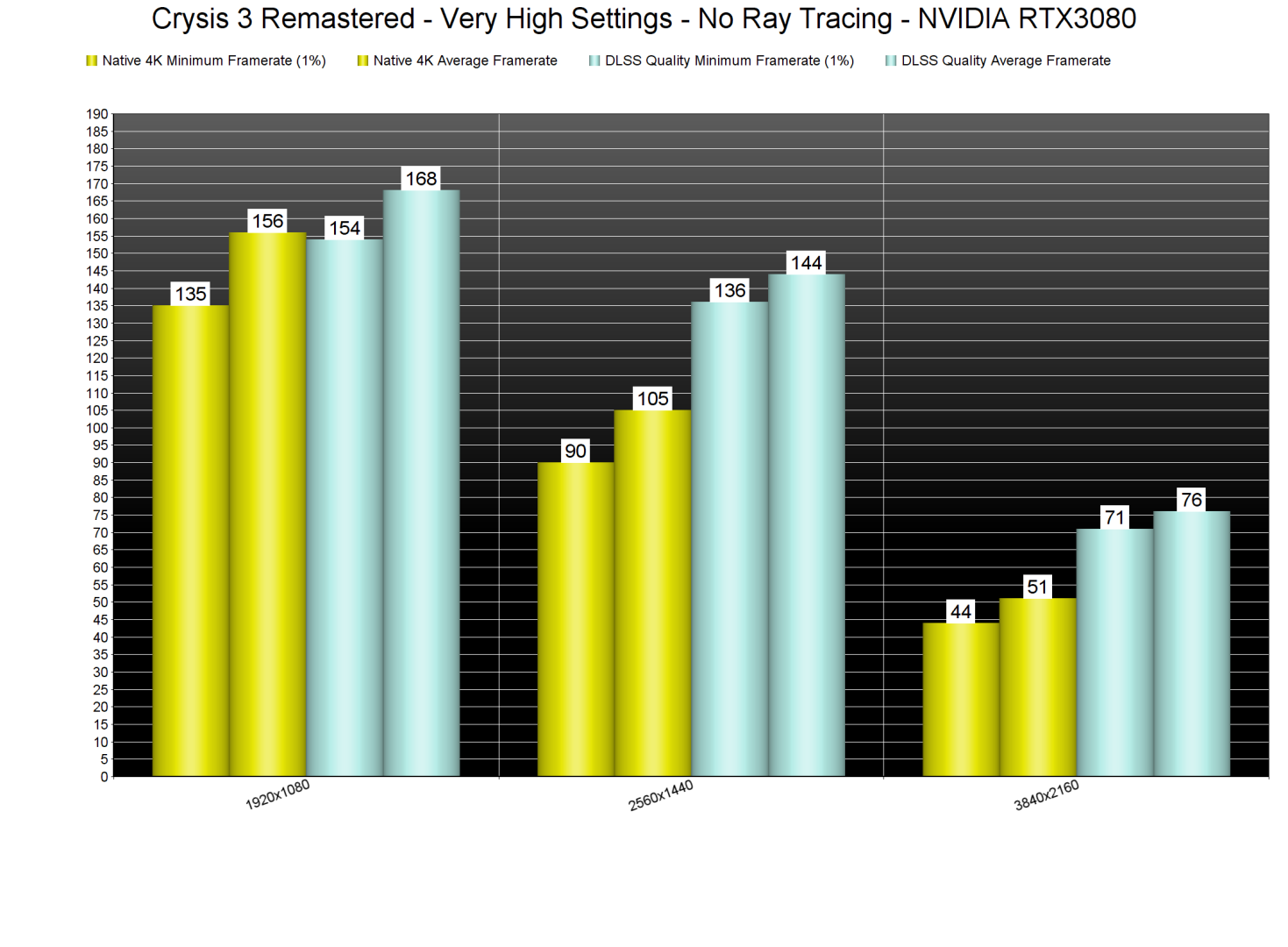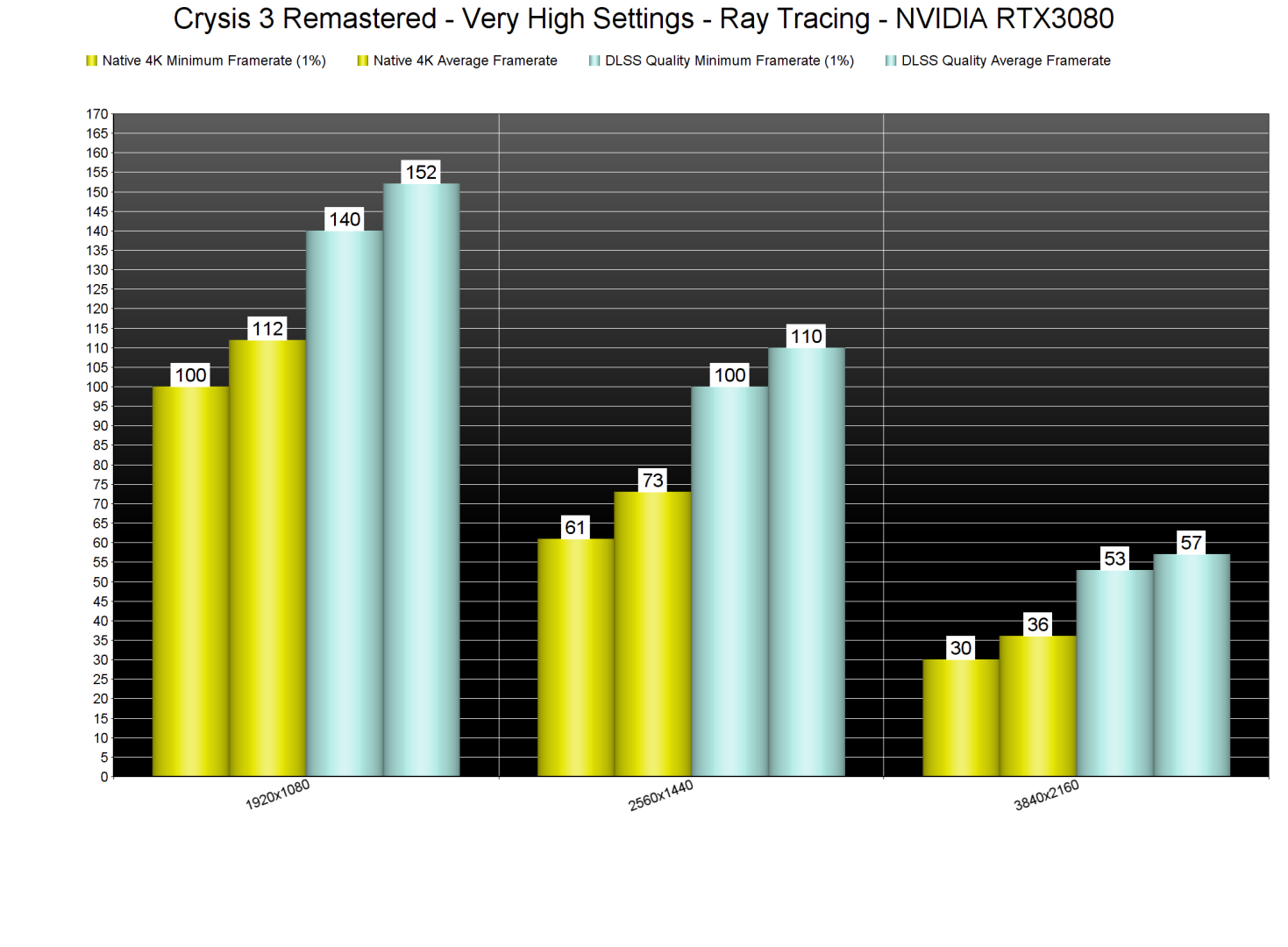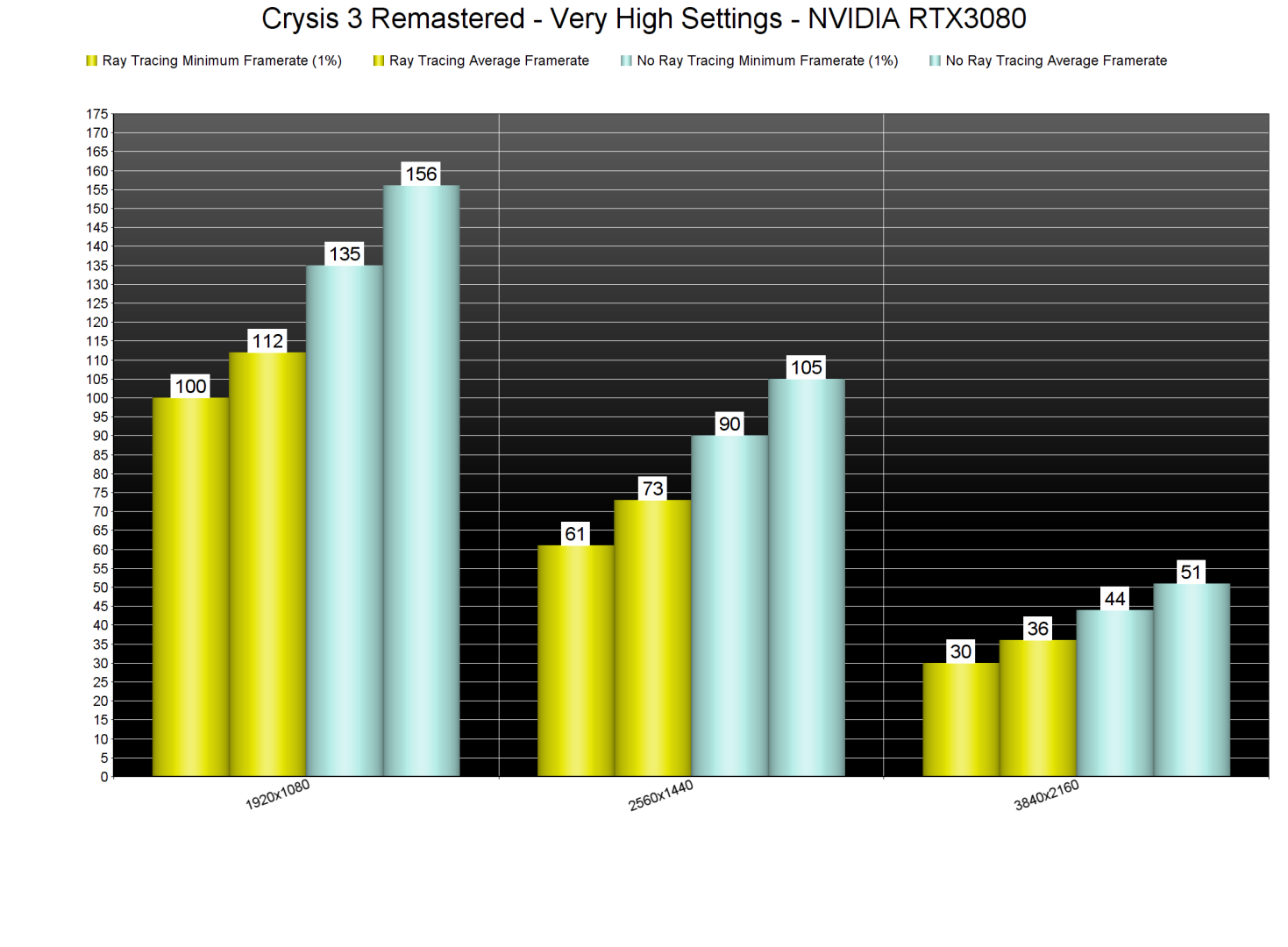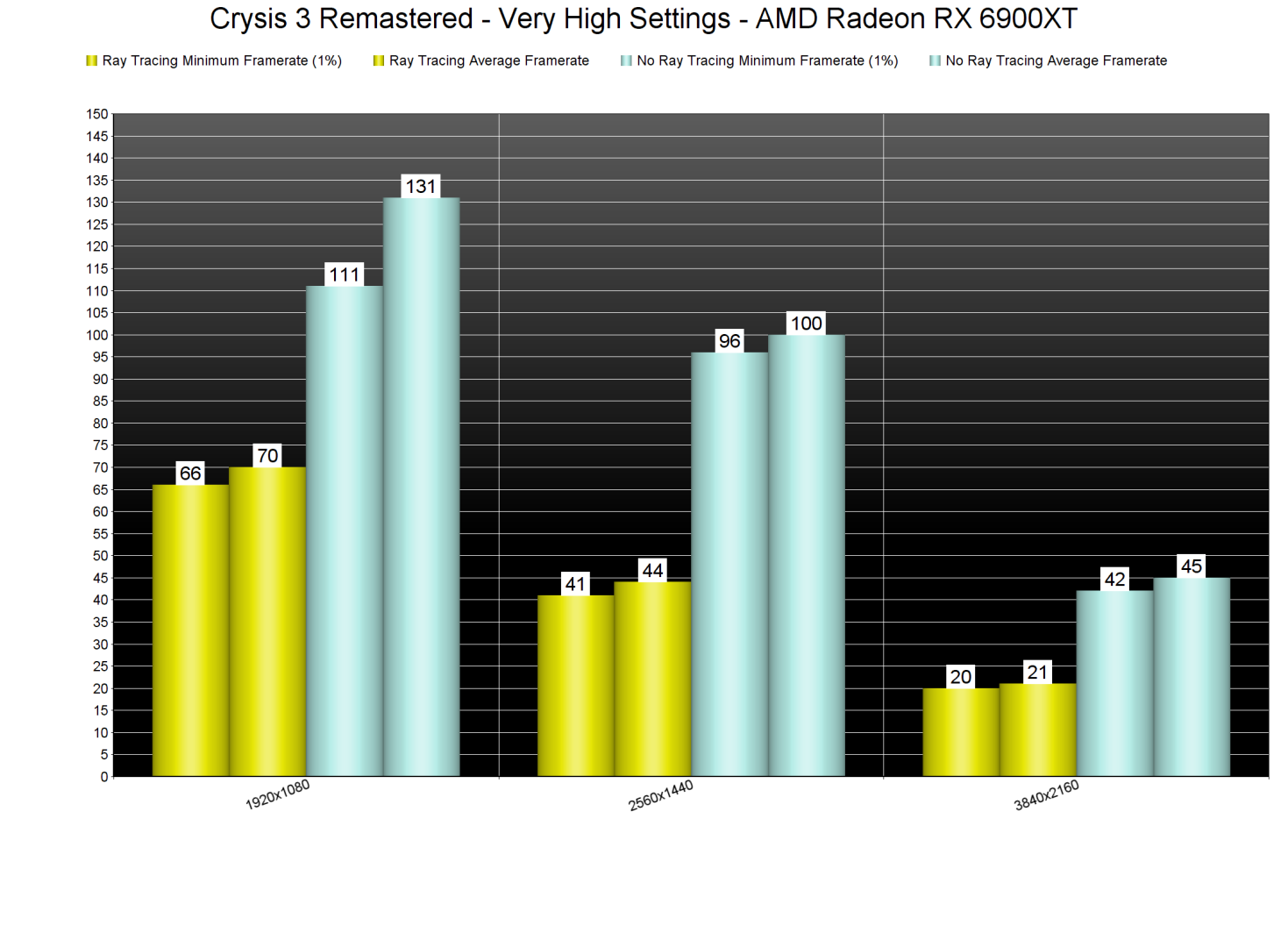Alongside Crysis Remastered and Crysis 2 Remastered, Crytek released a remastered version of Crysis 3. Powered by CRYENGINE, it’s time to benchmark it and see how it performs on the PC platform.
For this PC Performance Analysis, we used an Intel i9 9900K with 16GB of DDR4 at 3600Mhz, AMD’s Radeon RX580, RX Vega 64, RX 6900XT, NVIDIA’s GTX980Ti, RTX 2080Ti and RTX 3080. We also used Windows 10 64-bit, the GeForce 496.13 and the Radeon Software Adrenalin 2020 Edition 21.10.2 drivers.
Crytek has added a few graphics settings to tweak. PC gamers can adjust the quality of Game Effects, Objects, Particles, Post-processing, Shading, Shadows and Water. There are also options for Ray Tracing and DLSS. Additionally, the game features a FOV slider on PC.
Crysis 3 Remastered does not feature any built-in benchmark. As such, we’ve decided to benchmark the starting area. This area appeared to be stressing both the CPU and the GPU, so it was the ideal scene/level to benchmark.
In order to find out how the game scales on multiple CPU threads, we simulated a dual-core, a quad-core and a hexa-core CPU. Without Hyper-Threading, our dual-core system was unable to provide a smooth gaming experience due to severe stuttering issues. When we enabled Hyper-Threading, though, our dual-core system was able to run the game with a minimum of 96fps and an average of 107fps (at 720p/Max Settings without Ray Tracing). Our other systems did not have any trouble running the game. However, it’s worth noting that Hyper-Threading introduced a minor performance hit on our octa-core system.
For gaming at 1080p/Max Settings, without Ray Tracing, you’ll need a powerful GPU. Our GTX980Ti was unable to provide a constant 60fps experience. And while the game favours NVIDIA’s hardware, AMD’s Vega 64 was able to provide a constant 60fps experience. Similarly to Crysis 2 Remastered, Crysis 3 Remastered uses the DirectX 11 API. As such, NVIDIA’s high-end GPUs are significantly faster in lower resolutions than AMD’s high-end GPUs.
At 1440p/Max Settings/No Ray Tracing, the only GPUs that could provide a smooth gaming experience were the RTX2080Ti, RTX3080 and AMD RX 6900XT. As for gaming at native 4K, there wasn’t any GPU that could provide a constant 60fps experience on Very High settings.
The original Crysis 3 is still a demanding game. However, this remaster has noticeably higher GPU requirements. The good news with C3R is that it supports NVIDIA DLSS. As such, RTX owners can mitigate the game’s additional performance hit by enabling it. Also, and similarly to Crysis 2 Remastered, the DLSS implementation in Crysis 3 Remastered is exceptional. By using DLSS, we were able to get more than 60fps at all times at 4K/Max Settings/No Ray Tracing.
Below you can find some comparison screenshots between 4K native (left) and DLSS Quality (right). Can you spot the differences?
As said, Crysis 3 Remastered also supports Ray Tracing effects. Crytek has used Ray Tracing in order to enhance some of the game’s reflections. However, it can be really difficult to spot these ray-traced reflections. Not only that, but we feel that they do not really justify their performance hit. Thus, and if you want to enable them, I suggest using the Medium or High setting (which makes them less GPU-hungry). Below you can find some comparison screenshots between Ray Tracing (left) and No Ray Tracing (right).
Similarly to Crysis 2 Remastered, AMD’s most powerful GPU, the RX 6900XT, is only able to provide a smooth gaming experience at 1080p with these ray-traced reflections. On the other hand, the RTX3080 can run the game smoothly at both 1080p and 1440p. Not only that, but by enabling DLSS you can get even higher framerates.
Graphics-wise, Crysis 3 Remastered is a big letdown. Don’t get me wrong, the game still looks mighty impressive. However, this feels more like a re-release and not like a remaster. There are some slight tweaks, but those are a far cry from what you’d expect from a “remaster“. Hell, Crysis 3 Reshade can feel like a better remaster than what we got. Also, and contrary to Crysis 2 Remastered, Crysis 3 Remastered does not use SVOGI. As such, there aren’t any major improvements to lighting, shading, ambient occlusion or anything else. . The only good news here is the addition of DLSS.
All in all, and while it still looks beautiful, Crysis 3 Remastered is a big disappointment. This specific remaster was primarily developed for consoles and it shows. After all, the PC remaster looks almost the same as the original 2013 PC version. Let that sink in; this 2021 remaster looks similar to a game that came out 8 years ago. And that, in my opinion, says a lot. Yes, there are now 60fps physics animations but would you pay $30 just for that? I think not. So, if you already own the original Crysis 3 game, there is no reason at all to invest your time and money in this “remaster“.

John is the founder and Editor in Chief at DSOGaming. He is a PC gaming fan and highly supports the modding and indie communities. Before creating DSOGaming, John worked on numerous gaming websites. While he is a die-hard PC gamer, his gaming roots can be found on consoles. John loved – and still does – the 16-bit consoles, and considers SNES to be one of the best consoles. Still, the PC platform won him over consoles. That was mainly due to 3DFX and its iconic dedicated 3D accelerator graphics card, Voodoo 2. John has also written a higher degree thesis on the “The Evolution of PC graphics cards.”
Contact: Email


